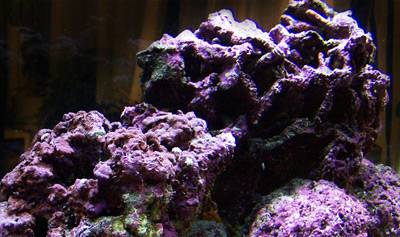Here at Saltwater Smarts, we emphasize again and again the importance of quarantining all marine livestock before introducing it to an established aquarium. But what about those pieces of live rock that we occasionally add to our established systems to bolster biodiversity and biofiltration or simply to spruce up the aquascaping? Do those need to spend time in quarantine too?
While live rocks aren’t really living, per se, you can’t just plop them in your system and call it a day. (I’m a poet and I didn’t even know it!) They require a quarantine period just like any animal you choose to add to your tank. Here are three good reasons:
1) Excluding undesirable hitchhikers
Live rocks are, for all intents and purposes, vehicles for hitchhiking organisms. Notwithstanding their aesthetics and the structural purpose they serve in a reef system, we buy live rocks primarily for the life forms inhabiting them.
But in addition to carrying interesting and/or beneficial fauna, they can also bring in their share of undesirable—if not outright nasty—critters, such as Aiptasia and majano anemones, crabs, mantis shrimps, etc. Observing the rocks in a separate tank for several weeks will greatly reduce (though perhaps not completely eliminate) the likelihood of such stowaways slipping unnoticed into your display tank.
I recommend positioning the rocks in the quarantine tank in such a manner that they’re relatively easy to view from all sides and, if possible, even from underneath (e.g., by raising them off the bottom on a rack). Be sure to grab a flashlight and look the rocks over after dark as well, as that’s when many hitchhikers are apt to make their presence known.
2) Dealing with die-off
No matter how carefully live rocks are handled and/or cured before you purchase them, some additional die-off of the encrusting organisms is bound to occur in your tank, the result being the production of ammonia. The impact on your system will depend on factors such as the size of your tank, the number and quality of rocks introduced, your current stocking level/feeding rate, etc. But why allow this potentially deadly ammonia spike to occur in an established system when you can manage it in a separate quarantine tank with no risk whatsoever to livestock?
3) Fish disease prevention
While it’s not highly likely, it is within the realm of possibility for live rocks to serve as a vector for fish disease. Cryptocaryon irritans, or marine ich, comes to mind here. If the rocks are kept in a tank holding fish infected with ich before you acquire them, it’s possible for the parasite to be present on the rocks in the reproductive tomont stage (in which it forms hardened cysts that attach to various substrates).
However, keeping the rocks in quarantine—sans any fish—for at least four weeks will ensure that if ich tomonts do happen to be present on their surfaces, the free-swimming parasites that hatch out will be unable to find a fish host and will soon die, effectively breaking the ich lifecycle.



